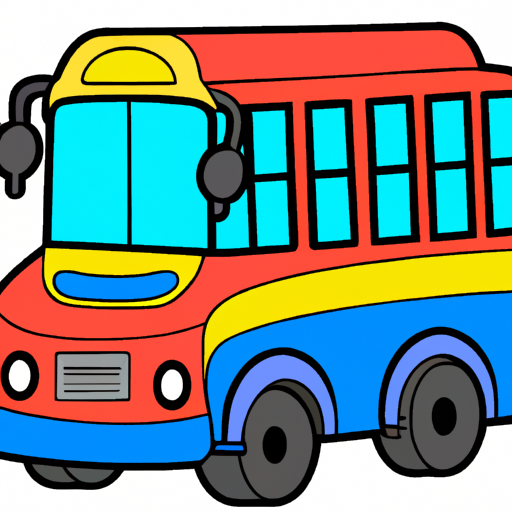
Evaluating School Programs
When considering which school is best for your family, it is important to evaluate the available programs and opportunities offered. Austin is home to some of the best schools in the nation, offering unique and creative programs that can help students excel academically. Whether your child is looking to specialize in a certain field or simply explore new possibilities, there is an opportunity that can tailor to their specific needs.
When evaluating school programs, the first step is to consider the academic options. Look into the curriculum and find out what classes are offered and if the school is accredited. It is also important to consider the available extracurricular activities and whether the school offers any special programs, such as honors classes, advanced placement courses, or dual enrollment. Ensuring that your child has access to the best education possible is a priority when choosing a school.
Many Austin schools are dedicated to providing students with a well-rounded education. Arts, music, and sports programs are often available, along with language classes, technology courses, and more. Extracurricular activities are essential for students to explore their passions and develop their talents. It is important to make sure the school offers a variety of activities to ensure your child has the opportunity to grow and learn in a safe, supportive environment.
When evaluating school programs, it is also important to consider the overall atmosphere. Does the school have a welcoming and inclusive environment? Do the teachers and staff strive to create a supportive and inspiring learning environment? Do the students have access to the resources they need to succeed academically and socially? These are all important questions to ask when considering the best school for your family.
Finally, don’t forget to consider the cost of tuition and other fees associated with the school. It is important to make sure the school is within your budget and that the tuition is affordable for your family.
Austin is home to some of the best schools in the nation, offering unique and creative programs that can help students excel academically and explore their passions. When evaluating school programs, it is important to consider the academic options, extracurricular activities, and overall atmosphere. Don’t forget to also consider the cost of tuition and other fees associated with the school. With the right research and evaluation, you can be sure to find the best school for your family.

Exploring Extracurricular Activities
A crucial part of choosing the best school for a family is exploring the extracurricular activities that are available. Austin is an incredibly creative and vibrant city that provides a huge array of unique and exciting extracurricular activities for families to explore. From art and music, to technology and sports, there is a plethora of options for parents and families to consider when exploring the best schools in Austin.
The Thinkery, for example, is an interactive children’s museum that offers a variety of creative and educational programs. These programs are designed to help children explore their interests, develop skills, and explore the world around them in a fun and engaging way. The Thinkery also offers workshops, camps, and even birthday parties, making it a great place for families to explore.
The Austin Public Library is another great resource for parents and families exploring the best schools in Austin. The library offers a wide variety of activities, classes, and events for children to enjoy. From story times and craft activities, to educational programs and special events, the library provides an excellent opportunity for children to explore their interests and develop new skills in a safe and engaging environment.
The Austin Aquarium is another great resource for families exploring the best schools in Austin. The aquarium offers a wide variety of interactive exhibits, educational programs, and animal encounters for children to explore. From sharks, stingrays, and jellyfish, to reptiles, amphibians, and fish, the aquarium provides an excellent opportunity for children to explore the wonders of the natural world.
The Blanton Museum of Art is another great resource for families exploring the best schools in Austin. The museum offers a wide variety of art exhibitions, educational programs, and special events for children to enjoy. From interactive art activities, to lectures and tours, the museum provides children with an opportunity to explore art in an engaging and inspiring way.
The UT Art Studio is yet another great resource for parents and families exploring the best schools in Austin. This program provides students with the opportunity to explore their artistic talents in a fun and engaging environment. The program offers a wide variety of classes, workshops, and events for students to explore.
The Austin Zoo is another great resource for families exploring the best schools in Austin. The zoo offers a wide variety of educational programs and interactive exhibits for children to explore. From lions and tigers, to birds and reptiles, the zoo provides an excellent opportunity for children to explore the wonders of the natural world.
These are just a few of the many resources available to families exploring the best schools in Austin. With so many exciting and engaging extracurricular activities to explore, it is easy to see why Austin is an ideal place for parents and families to consider when looking for the best school for their children.

Considering School Ratings
When searching for the best schools in Austin, it’s important to consider school ratings. Ratings can give you an idea of the quality of education, school culture, and performance of schools in the area. However, ratings alone don’t always tell the whole story. It’s important to dig deeper to get a better understanding of a school’s strengths and weaknesses.
For starters, you can look at the Texas Education Agency’s rating system. Schools receive ratings of “exemplary,” “recognized,” “acceptable,” or “unacceptable” based on performance levels in four areas: student achievement, student progress, closing performance gaps, and postsecondary readiness. This is a great place to start when researching schools in Austin.
You can also consider reviews from parents and students. Reviews can offer an insight into a school’s culture, atmosphere, and staff. Sites like GreatSchools.org have ratings and reviews of schools in Austin that can be a useful resource when researching schools.
In addition to reviews, consider visiting schools in person. Take a tour of the school and speak with teachers and administrators. Ask questions to get a better sense of the school’s commitment to providing quality education and creating positive learning environments.
When researching schools in Austin, look for schools that have a strong focus on creative learning. Schools that offer creative learning opportunities help students develop skills in critical thinking, problem solving, and communication. Look for schools that offer hands-on STEM activities, art classes, music classes, and other creative outlets.
Finally, research extracurricular activities. After-school programs, sports teams, and clubs can be a great way for students to explore their interests, develop leadership skills, and stay active. Look for schools that offer a variety of extracurricular activities that fit with the interests and goals of your child.
When researching schools in Austin, ratings, reviews, visits, creative learning opportunities, and extracurricular activities should all be considered. By taking a comprehensive approach to researching schools, you can find the best school for your child. With the right school, your child can have a positive, enriching, and rewarding experience.

Reviewing Student Performance Data
When it comes to finding the right school for your family, student performance data is one of the most important factors to consider. The Austin area is home to a variety of high-quality schools, and examining the data can help parents and families make the best decision for their children.
Fortunately, the Austin Independent School District provides a wealth of data on each of its schools, allowing parents to compare and contrast performance metrics. Data points can include student test scores, graduation rates, college readiness, and more. This information can provide families with a clear picture of the quality of education each school is providing.
Additionally, Austin ISD has developed a new rating system for their schools, called the School Performance Index, which takes into account a variety of factors to determine overall student performance. This system can be used to compare schools and help families find the best fit for their needs.
It’s also important to look beyond the data when choosing a school in Austin. Each school has its own unique culture and atmosphere, and it’s important for parents and families to visit schools and get a feel for them. By talking to current students, teachers, and administrators, families can get a better understanding of what each school is like.
Finally, when it comes to finding the best school in Austin, it’s important to keep an open mind and remember that there is no one-size-fits-all solution. Every family is different, and the right school for one family may not be the best choice for another. With careful consideration of student performance data, visits to schools, and a willingness to explore, parents and families can find the school that’s right for them.


Researching School Safety Ratings
When selecting a school for your children, safety is a priority. With the rise of school shootings and other dangerous incidents, parents are increasingly concerned with the safety of their children when it comes to education. Therefore, researching school safety ratings should be an important part of your decision-making process.
In Austin, the Texas Education Agency provides an online database for parents to explore school safety ratings. The database includes detailed information about the safety of each school, such as the number of serious incidents that have occurred over the past several years. It also includes ratings for the overall safety of the school, as well as specific aspects like the ability of faculty and staff to respond to and prevent incidents.
Parents can also use the Texas Education Agency’s School Report Card to compare safety ratings from different schools in the area. The Report Card includes data from the safety database, as well as additional information such as student test scores, attendance rates, and teacher qualifications. This can be an invaluable tool when deciding which school to send your children to.
In addition to the Texas Education Agency’s resources, parents can also research the safety ratings of individual schools by talking to school administrators and other community members who have children attending the school. This can be a great way to get an insider’s perspective on the safety of the school and its staff.
It is also important to consider additional safety measures that a school may have in place to protect students and faculty. For example, some schools may have metal detectors, video surveillance, and other security measures in place. Additionally, schools may have policies and procedures in place to help prevent dangerous incidents from occurring.
It’s natural for parents to worry about their children’s safety when selecting a school. By researching school safety ratings, parents can make an informed decision about where their children will receive their education. By taking the time to research school safety ratings, parents can rest assured that they are choosing a safe and secure school for their children.

Analyzing Student-Teacher Ratios
When it comes to selecting the best school for their children, parents and families in Austin, Texas need to consider a variety of factors. One of the most important of these is the student-teacher ratio. A low student-teacher ratio can provide many benefits for students and can be an important indicator of a school’s overall quality.
When analyzing student-teacher ratios, it’s important to look at the overall ratio as well as the ratios of particular grade levels. For example, many schools may have lower student-teacher ratios overall but may have higher ratios in certain grade levels. It’s also important to consider the quality of the teaching staff and how much individual attention the students receive.
In Austin, some of the best schools have student-teacher ratios that are well below the national average. For example, the Austin International School has an average student-teacher ratio of 13 to 1, which is significantly lower than the national average of 16 to 1. The school also has a variety of enrichment and extracurricular activities to further engage students.
At the Anderson High School, the student-teacher ratio is 17 to 1. While this is slightly higher than the national average, the school provides a comprehensive education to its students and is known for its high-quality teaching staff. The school also has a variety of enrichment programs and clubs that students can participate in.
The Kealing Magnet Middle School has an average student-teacher ratio of 15 to 1, giving students plenty of individual attention from their teachers. The school also has a well-rounded education program that includes a variety of electives and enrichment activities.
The IDEA Rundberg Academy has an impressive student-teacher ratio of 10 to 1. This is much lower than the national average and ensures that students receive individual attention from their teachers. The school also has a variety of programs and activities that students can take part in.
Finally, the Austin Discovery School has a student-teacher ratio of 8 to 1. This is the lowest ratio of any school in Austin and ensures that students get plenty of individual attention from their teachers. The school also has a variety of extracurricular activities and enrichment opportunities for students to take part in.
When it comes to selecting the best school for their children, parents and families in Austin should consider the student-teacher ratio. This can be an important indicator of the overall quality of the school and can help ensure that students receive the individual attention they need to achieve success. By carefully researching the student-teacher ratios of the schools they’re considering, parents and families can make an informed decision and find the school that’s best for their children.

Examining Tuition Costs
When it comes to selecting the best schools in Austin for your children, you need to consider a variety of factors, including tuition costs. Tuition costs are an important factor when choosing the right school for your child, as they can drastically vary from school to school. In Austin, tuition costs can range from a few hundred dollars to tens of thousands of dollars.
The most expensive school in the area is St. Stephen’s Episcopal School. This private school charges an outrageous tuition cost of $41,100 per year. This tuition rate is something that many families simply cannot afford.
On the other hand, there are several schools in Austin that offer tuition rates that are much more affordable. The prestigious and highly respected KIPP Austin Public Schools offer tuition rates that are much more reasonable. KIPP Austin Public Schools are tuition-free and offer a quality education to students from all backgrounds.
The Austin Independent School District also offers a wide variety of schools with tuition rates that are much more affordable than the rates at St. Stephen’s Episcopal School. Tuition rates at AISD range from $6,000 to $10,000 per year. This tuition range is much more feasible for many families.
In addition to tuition costs, it is important to consider other factors when selecting a school for your child. Factors such as the quality of the teachers, the school’s curriculum, and the overall environment should all be taken into consideration. It is essential to research each school and to visit the campuses in order to make an informed decision.
Ultimately, families should select the school that is best suited for their children and their individual needs. It is important to choose a school that provides a quality education and a healthy learning environment for your child. By doing so, you can ensure that your child is receiving the best possible education.
It is also important to remember that the best schools in Austin are not necessarily the most expensive schools. By researching schools and exploring all of the options available, you can find a school that is both affordable and provides a quality education for your child.

Weighing Transportation Options
When trying to decide which school is best for your family, transportation is a key factor to consider. As a parent or family in Austin, you have a lot of choices when it comes to getting your child to and from school. The most common forms of transportation are school buses, carpools, and walking or biking.
School buses are a popular choice for many families in Austin, as they provide safe, reliable transportation for students. The Austin Independent School District has a fleet of buses to accommodate students in their district and many schools also offer private bus services for a fee. Bus services are often more cost-effective than other forms of transportation and can be more reliable, especially if traffic is a concern.
Carpooling is another option for families who can’t afford a bus or who don’t want to rely on one for transportation. Carpools are convenient and economical, allowing families to split the costs of getting to and from school. Additionally, carpooling can help reduce traffic and pollution in the city. To find a carpool, you can look for existing carpools in your area, or you can use apps to connect with other parents and families.
If you don’t have access to a carpool or a bus, you can always choose to walk or bike to and from school. Walking and biking are both great options for getting to and from school, as they provide exercise, fresh air, and a peaceful start to the day. Depending on the school, you may also find that walking or biking is faster than driving or taking the bus.
When it comes to getting your child to and from school, there are a number of options to consider in Austin. Whether you choose to take the bus, carpool, walk, or bike, there is a transportation option that can meet your family’s needs. By taking the time to research and weigh your transportation options, you can ensure that your child gets to and from school safely and on time.

Investigating Local Community Resources
Parents in Austin have a wealth of resources at their disposal to help make informed decisions when it comes to selecting the best school for their children. The wealth of information available can be overwhelming, so it is important to focus on what matters most when it comes to finding the best educational environment for your child. One of the best ways to ensure a quality education is to investigate local community resources.
The Austin Public Library is a great place to start. They offer many resources and programs to help parents and families explore the options available. The library is equipped with a plethora of materials to help parents make informed decisions. From books to magazines to educational videos, the library is a great way to find out what is available in the area.
The library also offers classes and workshops on a variety of topics related to education and parenting. Attend a class on how to choose the best school for your child or participate in a workshop about the education system in Austin. The library also provides access to online resources such as the University of Texas at Austin’s online college counseling program.
In addition to the library, there are many other local resources available to help parents and families in their search for the best school. Researching local schools and districts is important, as each district offers its own unique curriculum and educational opportunities. Additionally, many families in Austin may not be aware of the charter schools that are available in the area. These schools are often tuition-free and offer a unique learning environment.
The Austin Independent School District provides a variety of resources to help parents and families find the best school for their child. They offer a searchable database of public schools in the area, as well as a variety of free and low-cost resources to help families make informed decisions. The district also provides an online guide to help parents understand the Texas public school system and the educational resources available in the district.
In addition to researching schools and districts, families should take time to explore local organizations and community groups. There are many groups in Austin that are devoted to supporting education and helping families get the most out of the educational opportunities available in the area. These organizations often provide resources such as parent support groups, after-school programs, and scholarships for students.
Investigating local community resources is an important part of the process when it comes to finding the best school for your child. There are many resources available to help parents and families make informed decisions about the education of their children. With the help of the library, local organizations, and the Austin Independent School District, parents and families can find the best school for their child.



